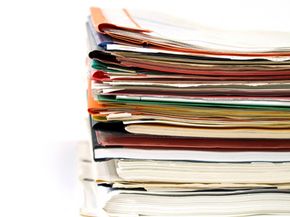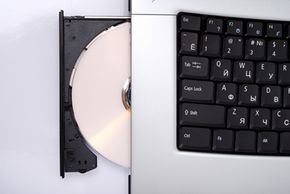Start working in a home office, and before you know it, paper stacks are building in every corner -- unless you're committed to having a paperless office from the beginning. Unfortunately for most of us, a paperless home office is more an idea than a reality.
Once an unbalanced pile of paper topples or client notes take too long to find during a phone meeting, the concept of going paperless becomes more than a passing thought. Face it. Paper has crept into your office, made a home and plans to stay -- until you develop the paperless systems to chase it out.
Advertisement
That means you'll need to take control, look into electronic systems like data management, document management and paperless software -- and in general, figure out how paperless home offices work, and how you can make one work for you. Take it one step at a time, and that process is easier than you might think. This article will show you steps to get started, technology that can help and ideas for managing paperless documents.
You'll never have a completely paperless office, because some papers -- like deeds, notarized documents or receipts -- need to be saved for legal, financial or tax reasons. But you can clear out just about everything else. Beyond freeing space and clearing clutter, you'll find plenty of other benefits to making your office more paperless:
- More efficient -- Save those 10 minutes you spent fumbling through paper while on the phone by clicking on a computer file.
- More economical -- Save money on files, file cabinets, printer ink and paper itself.
- More accessible information -- Don't worry about taking 10 pounds of reports and notes on an out-of-town trip or across town to a client meeting. You can pull up the information you need from your computer and share materials with collaborators or clients via e-mail or electronic fax.
- More secure information -- Keep confidential material securely locked away in electronic files that only you can access. You also won't have to worry about paper becoming damaged.
- More environmentally friendly -- Help reduce the amount of paper generated every year. The American Forest and Paper Association estimates that the typical business generates 1.7 pounds of material per person per day, most of it high-grade recyclable paper.
If you're ready, let's look at how you can start on the road to paperless. Go to the next page to find out.
Advertisement




